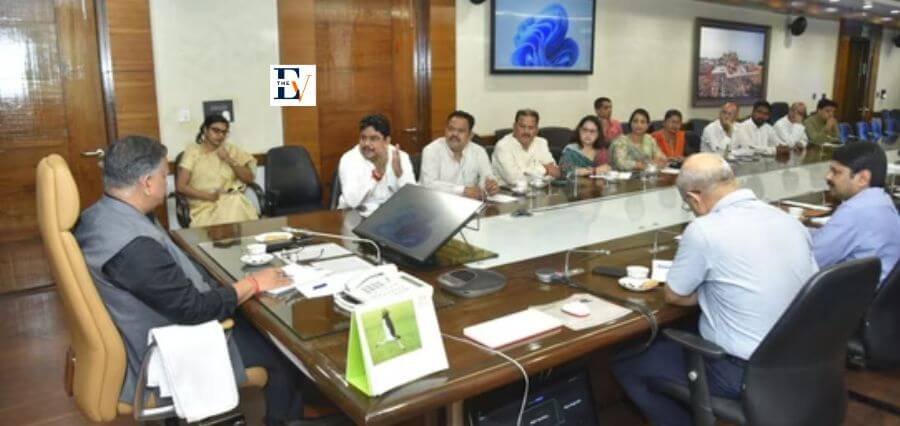Urban spaces are the lifeblood of communities, serving as hubs of activity, culture and social interaction. However, many urban areas face challenges such as decay, neglect and a lack of functional public spaces. Addressing these issues requires innovative solutions that integrate community needs with expert design. Collaborative projects between design schools and communities offer a powerful approach to revitalizing urban spaces, blending academic expertise with local knowledge and engagement.
These collaborations harness the creativity and fresh perspectives of design students, guided by experienced faculty, to address real-world problems. By working directly with community members, design schools can create projects that are aesthetically pleasing, functional and meaningful to those who use them. This synergy between academia and the community fosters a sense of ownership and pride among residents, ensuring that revitalization efforts are sustainable and impactful.
The correlation between design schools and community collaboration is vital for sustainable urban development. Design schools bring theoretical knowledge and technical skills, while communities offer insights into local culture, needs and aspirations. Together, they create a participatory design process that enhances urban environments and strengthens social ties.
This article examines the role of collaborative projects between design schools and communities in revitalizing urban spaces!
The Benefits of Collaboration
Bridging the Gap Between Theory and Practice: One of the primary benefits of collaborative projects is bridging the gap between theory and practice. Design students often work on hypothetical projects within the confines of the classroom. Collaborative projects, however, provide an opportunity to apply their skills to real-world challenges. This hands-on experience is invaluable for developing practical problem-solving abilities and gaining insights into the complexities of urban design.
Enhancing Community Engagement: Collaboration with design schools enhances community engagement by involving residents in the planning and design processes. This participatory approach ensures that the voices of community members are heard and their needs are addressed. It fosters a sense of ownership and responsibility among residents, leading to more successful and enduring urban revitalization projects.
Fostering Innovation and Creativity: Design schools are hotbeds of innovation and creativity. Collaborative projects tap into this resource, bringing fresh ideas and unconventional solutions to urban challenges. The dynamic energy of students, combined with the wisdom of community members, often results in innovative designs that might not emerge through traditional planning processes.
The Collaborative Process
Identifying Community Needs: The first step in any collaborative project is identifying the needs and aspirations of the community. This involves conducting surveys, holding public meetings and engaging with local stakeholders to gather input. Design schools can use various methods, such as participatory workshops and focus groups, to ensure comprehensive community involvement.
Developing Design Proposals: Once the needs are identified, design students work on developing proposals that address these concerns. Guided by faculty, students create multiple design options, incorporating feedback from community members throughout the process. This iterative approach ensures that the final design aligns with the community’s vision and practical requirements.
Implementing and Evaluating Projects: Implementation is a critical phase where design concepts are brought to life. This often involves collaboration with local authorities, funding agencies and construction teams. Design schools may also play a role in overseeing the implementation to ensure fidelity to the proposed designs. Post-implementation, projects are evaluated based on their impact on the community, usability and overall success in revitalizing the urban space.
Challenges and Solutions
Ensuring Genuine Participation: One of the challenges in collaborative projects is ensuring genuine community participation. It is crucial to engage community members from the outset and throughout the project. Transparent communication and regular updates help build trust and keep the community invested in the process.
Balancing Academic and Practical Considerations: Balancing academic objectives with practical considerations can be challenging. Design schools need to ensure that projects meet educational goals while also being feasible and beneficial for the community. Flexibility and adaptability are key to achieving this balance.
Conclusion
Collaborative projects between design schools and communities play a pivotal role in revitalizing urban spaces. By integrating academic expertise with local knowledge and participation, these projects create innovative, functional and meaningful urban environments. The synergy of design education and community engagement fosters sustainable development and enhances the quality of life in urban areas.
Looking ahead, the expansion of such collaborative initiatives promises to further transform urban spaces, incorporating advanced technologies and sustainable practices to meet the evolving needs of communities. These partnerships will continue to inspire innovative solutions, fostering resilient and vibrant urban environments.





